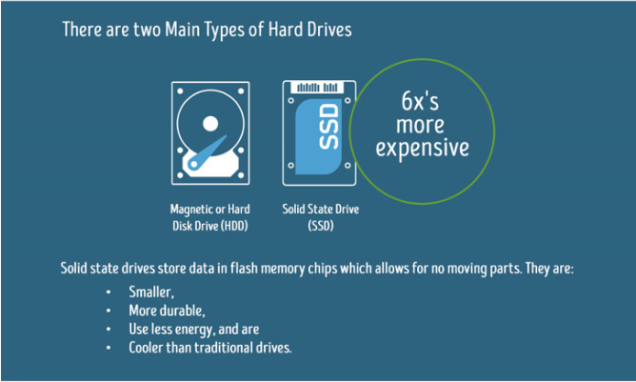Click here to view Part 1.
 The two most common types of laptop and desktop storage devices are hard disk drives (HDD) and solid-state drives (SSD).
The two most common types of laptop and desktop storage devices are hard disk drives (HDD) and solid-state drives (SSD).
A hard disk drive pairs the platters with magnetic heads arranged on a moving actuator arm, which reads and writes data to the platter sources. Hard disk drives retain stored data even when the device is powered off.
Solid state drives store data in flash memory chips which allows for no moving parts. They are smaller, more durable, use less energy and are cooler than traditional drives. Solid state drives typically hold more value than magnetic or hard disk drives.
Therefore when evaluating which hard drive data destruction method is right for you, many considerations will come into play to help you maximize the value and minimize your risk. It is best to work with a professional to ensure you’re doing what’s right to protect your corporate, client and personal data.
Click here for “Part 3” of our five-part hard drive data destruction series.
For more information on hard drive data security, download our complimentary whitepaper on “Five Ways to Improve Your Security During IT Asset Disposition (ITAD)”.